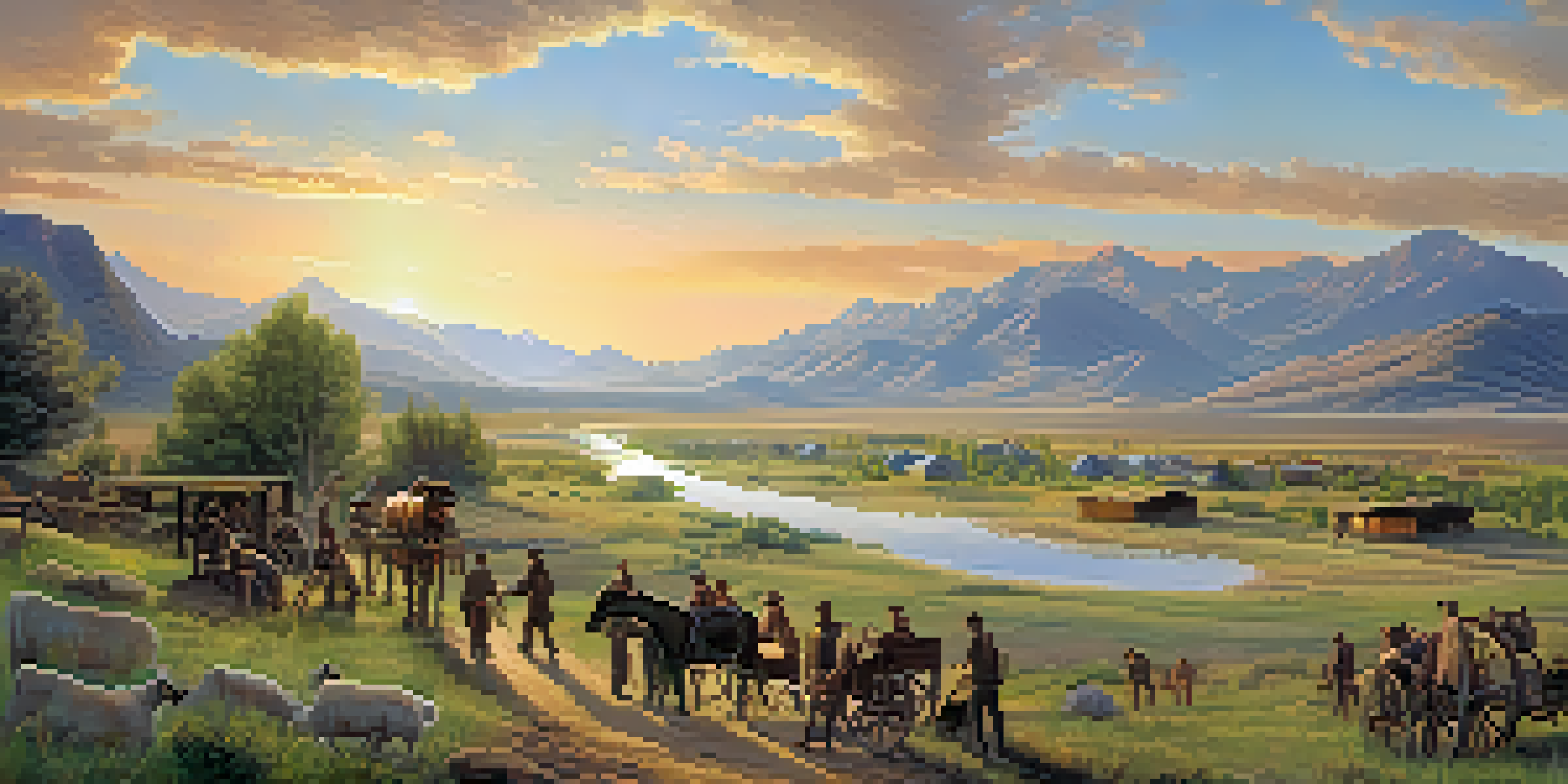Understanding Utah's Political History: Key Milestones

The Founding of Utah and Early Governance
Utah's political history begins in the mid-1800s when Mormon pioneers settled in the Salt Lake Valley. This migration was led by Brigham Young, who sought religious freedom and a place to establish a new community. In 1849, the settlers established the State of Deseret, which was short-lived but set the stage for future governance.
The only thing we have to fear is fear itself.
The U.S. government soon intervened, establishing the Utah Territory in 1850. This marked a significant shift, as local leaders had to navigate the complexities of federal authority while maintaining their community’s unique identity. The juxtaposition of territorial governance and local control created a dynamic political landscape.
As Utah's population grew, so did its political aspirations. The push for statehood began in earnest, reflecting the evolving identity of Utahns and their desire for self-governance. This desire would become a recurring theme throughout Utah's political history.
The Struggle for Statehood
Utah's journey to statehood was far from straightforward. The territory faced significant opposition, largely due to its strong association with the Mormon Church and polygamy practices. These factors fueled skepticism and resistance from the federal government and other states, delaying Utah's admission.

In 1890, the Church of Jesus Christ of Latter-day Saints officially renounced polygamy, which was a pivotal moment that helped ease tensions with the federal government. This decision was crucial for Utah's statehood bid, showcasing how religious and political strategies intertwined in the region's history.
Utah's Path to Statehood
Utah's journey to statehood was marked by challenges, including opposition from the federal government due to its association with the Mormon Church and polygamy.
Finally, in 1896, Utah was admitted to the Union as the 45th state. This milestone was celebrated not just as a political achievement, but as a triumph for the community that had fought hard for recognition and self-determination.
The Emergence of the Progressive Movement
The early 20th century saw the rise of the Progressive Movement, which sought to address issues like corruption, inequality, and social justice. Utah was no exception to this trend, as citizens rallied for reforms that would reshape the political landscape. This grassroots movement aimed to make government more accountable and responsive to the needs of its people.
Injustice anywhere is a threat to justice everywhere.
Key reforms included women's suffrage, which Utah granted in 1870, making it one of the first states to do so. This progressive spirit not only empowered women but also laid the groundwork for other social reforms, reflecting the state's commitment to inclusivity and equality.
The Progressive Movement's influence extended into various sectors, including education and labor rights. These changes not only transformed Utah's political climate but also fostered a sense of community engagement that continues to resonate today.
World War II and Its Political Impacts
World War II brought significant changes to Utah's political landscape, as the state became a key player in the war effort. Military installations, such as Hill Air Force Base, were established, creating jobs and boosting the local economy. This influx of military personnel and resources transformed Utah's demographics and political priorities.
The war also catalyzed a shift in attitudes toward civil rights and social justice. As soldiers returned home, many Utahns began to question traditional norms and advocate for greater equality, laying the groundwork for future civil rights movements.
Impact of the Progressive Movement
The early 20th century Progressive Movement in Utah led to significant reforms, including women's suffrage and increased community engagement in politics.
The post-war era saw a surge in political engagement as veterans and their families sought to influence policy and governance. This period marked a critical turning point, as more people became involved in local politics, shaping the future of Utah's governance.
The Civil Rights Movement in Utah
The Civil Rights Movement of the 1960s had significant ripples in Utah, where activists fought against racial discrimination and for equality. While Utah is often viewed as a predominantly white state, minority groups, particularly African Americans, played a vital role in advocating for civil rights. Their efforts were essential in challenging systemic injustices and seeking representation.
Local leaders, such as Dr. Martin Luther King Jr. and other civil rights advocates, organized marches and protests, raising awareness about social inequalities. These grassroots efforts not only demanded change but also fostered a sense of community solidarity that transcended racial and cultural barriers.
In 1964, Utah passed its first civil rights act, a landmark achievement that marked a commitment to ending discrimination. This legislative victory was a testament to the perseverance of activists and the shifting political climate, paving the way for a more inclusive society.
The Rise of the Republican Party in Utah
The latter half of the 20th century saw the Republican Party gain significant traction in Utah's political landscape. This shift was influenced by national trends, as conservative values began to resonate with many Utahns. The party's emphasis on limited government, economic growth, and traditional family values appealed to a large segment of the population.
In 1964, Utah voted for Barry Goldwater, a pivotal moment that solidified the state’s alignment with the Republican Party. This election not only reflected changing political sentiments but also marked the beginning of a long-lasting Republican dominance in state politics.
Modern Political Challenges
In the 21st century, Utah faces new political challenges such as immigration, healthcare, and environmental issues, alongside a growing demand for representation and inclusivity.
Since then, Utah has consistently leaned Republican in both local and national elections. This alignment has shaped policy decisions and governance, influencing everything from education to healthcare and defining the state's political identity.
Modern Political Challenges and Developments
As we move into the 21st century, Utah faces new political challenges that reflect broader national issues. Topics such as immigration, healthcare, and environmental concerns are at the forefront of political discourse. These issues have sparked debates among citizens and lawmakers, highlighting the need for innovative solutions.
The rise of technology and social media has also altered the political landscape, providing new platforms for activism and engagement. Young voters, in particular, are increasingly using these tools to voice their opinions, pushing for change and holding leaders accountable.

In addition, Utah's unique cultural landscape continues to shape its political identity. As diverse communities grow, the conversation around representation and inclusivity becomes even more critical, driving the state toward a more nuanced and dynamic political future.